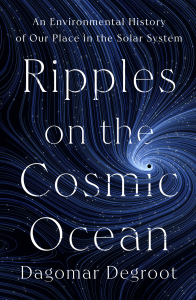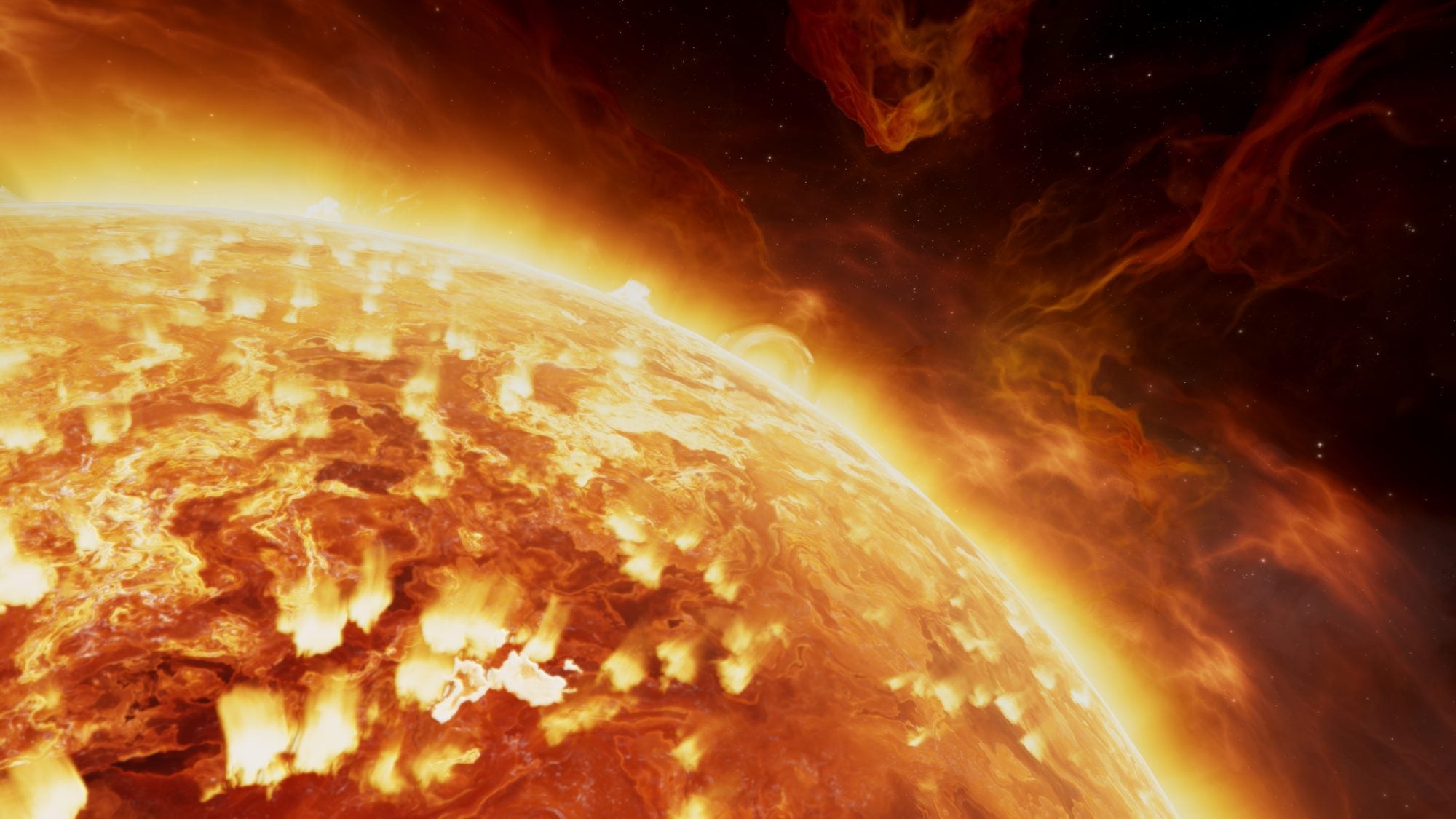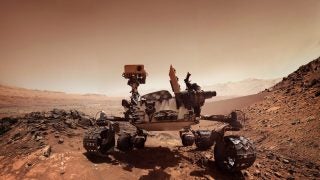Humanity narrowly avoided a major disaster in 2012. That year, a giant magnetic bubble filled with solar plasma blasted from the sun and into the solar system.
It missed Earth by about nine days.
What almost hit Earth was a coronal mass ejection (CME). If it had hit, the damage could have been catastrophic, said Dagomar Degroot, associate professor of history in the College of Arts & Sciences.

That’s because powerful CMEs can destroy the transformers that manage voltage on energy grids. Because transformers are difficult to replace, blackouts could affect entire regions of the world, possibly for years, Degroot said.
Solar events like CMEs are one of many space events that can impact human civilization. In his new book, Ripples on the Cosmic Ocean: An Environmental History of Our Place in the Solar System, Degroot studies how these cosmic events have shaped human history.
“When the sun changes and the sun’s influence on the solar system changes, I call that a ripple on the cosmic ocean that affects the space environment. Or when the moon’s or Mars’ environments seem to change. They’re ripples on the cosmic ocean, and when astronomers observe them, they affect humanity,” he said. “What I discovered in writing this book is that these ripples have had diverse, sometimes contradictory, sometimes profound impacts on human history, not just millions of years ago, but also in the last five centuries.”

Those space impacts include spurring technological breakthroughs, influencing social movements and generating conspiracy theories about alien life, he said. But as an environmental historian, Degroot is also interested in how human civilization can shape its corner of the cosmos to reduce its impact on Earth’s environment.
“I argue for creating environmental interventions in order to preserve life on Earth. I argue for things like mining the asteroids and creating solar power stations in orbit, things that could someday benefit everybody on Earth,” he said. “I argue for some of these interventions because the environments on Earth are special, full of life, and we depend on those environments.”
Learn about the threats posed by cosmic events, and discover Degroot’s vision of a human civilization settling in asteroid cities while preserving Earth’s climate.
Ask a Professor: Cosmic Threats to Earth and the Future of Humanity in Space
How does the sun affect modern human life on Earth?
The whole solar system is basically the sun and some parts left over from its formation. What we see with the sun is variations in what we call its output. Sometimes it sends a little bit more energy to Earth than other times. Those little differences actually add up, and they can influence Earth’s climate.
The sun is also a really complicated magnet. As magnetic field lines are constantly interacting, tangling and snapping open, you get solar flares and these huge ejections of particles from the sun, called CMEs, that impact the Earth. This activity also waxes and wanes.
Humanity has, in some ways, grown less vulnerable to changes in solar output, partly because of modern technology. But our technology also makes us more vulnerable to changes in solar magnetic activity, which can create electrical currents in the Earth’s crust and, among other things, fry our electrical grids.
Does the sun pose any existential threat to humanity?
Maybe.
Scientists have long assumed that the worst solar storms that could be produced happened in 1859, the so-called Carrington Event. It didn’t have that much of an impact on Earth because electrification hadn’t spread very far.
But if it happened now, we could lose every transformer in the northeastern U.S. Transformers are huge machines that are integral to electrical grids, and they’re almost impossible to replace. They’re highly specialized and customized, so you might need over a year to replace a broken transformer.
If one transformer breaks in one part of the grid, that’s okay. But if you have a significant share of the transformers along the East Coast of the U.S. being irreversibly broken, then we would probably lose power for tens of millions of people, potentially for years. There would be no electricity for transportation, communication, running water, medicine — you name it. Millions could die, and the national economy — and actually, the global economy — could collapse.
And it turns out that there’s a real possibility that the sun can produce far more powerful storms than our technological civilization has ever encountered. Much more powerful than the Carrington Event.



